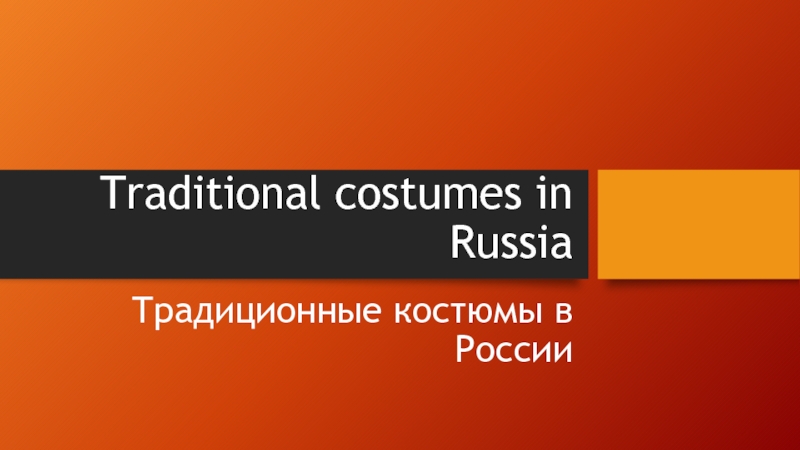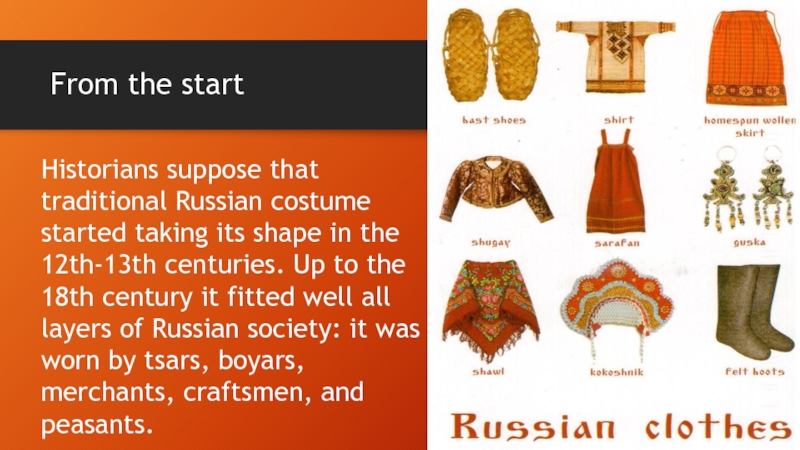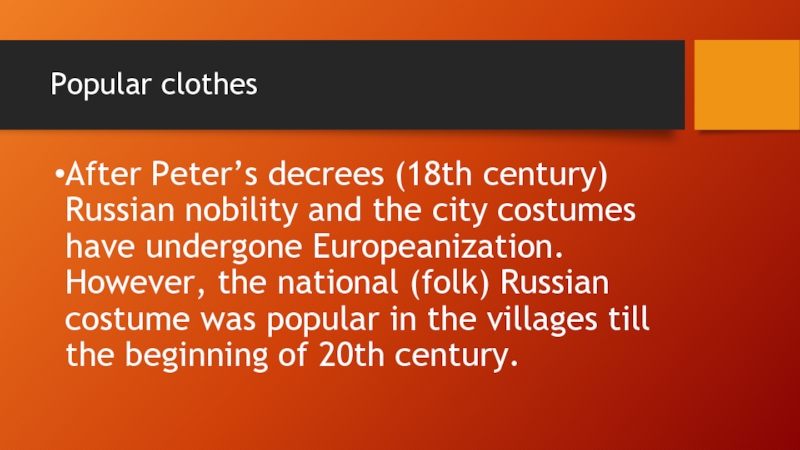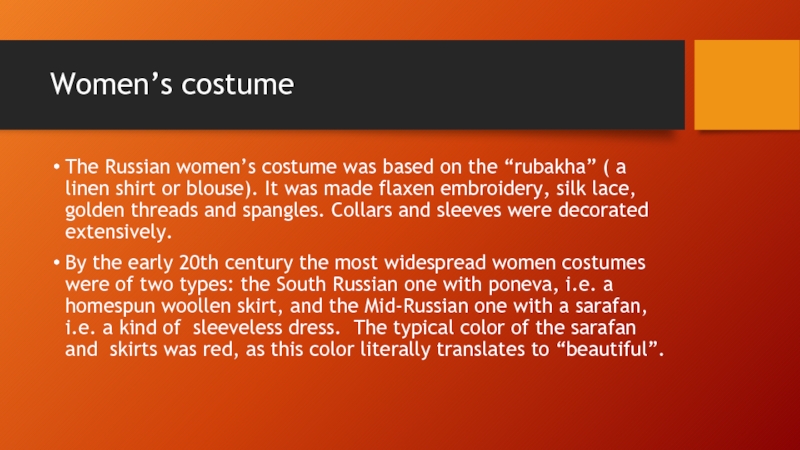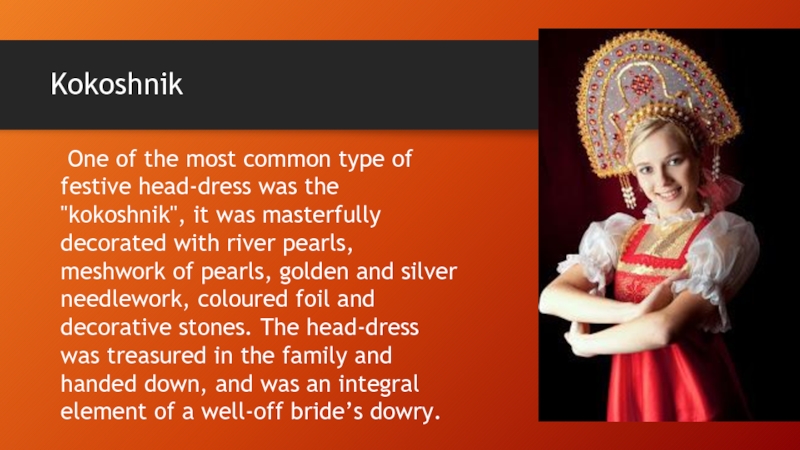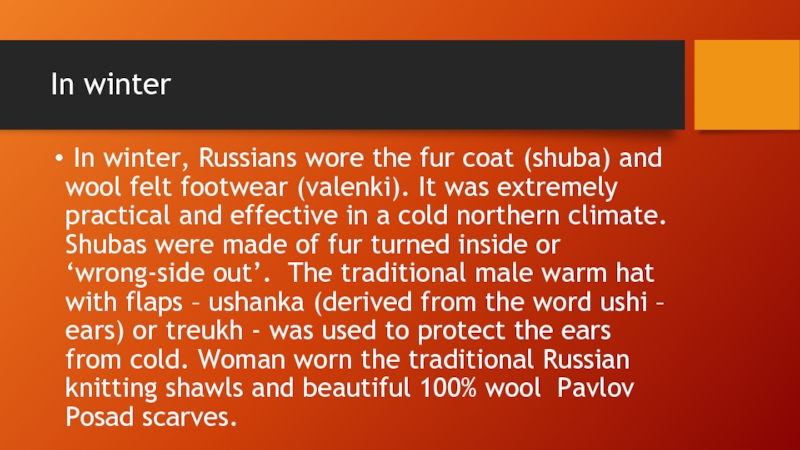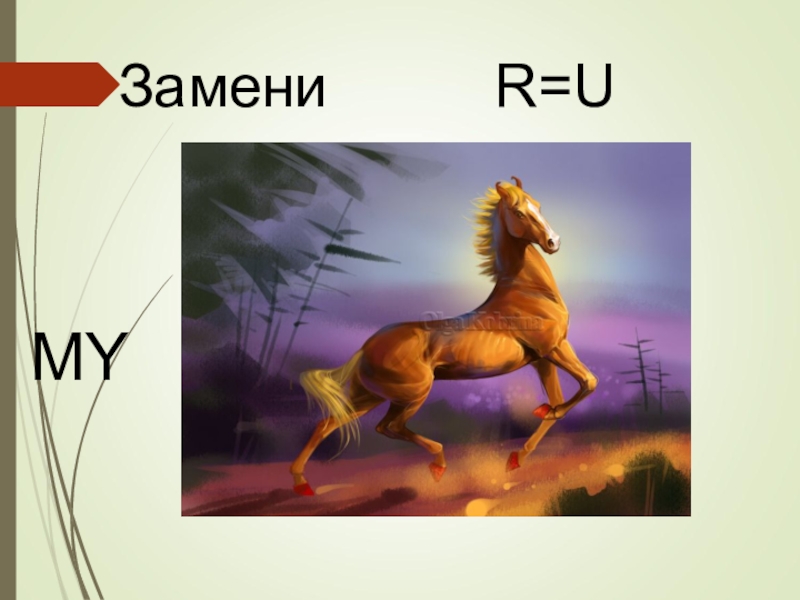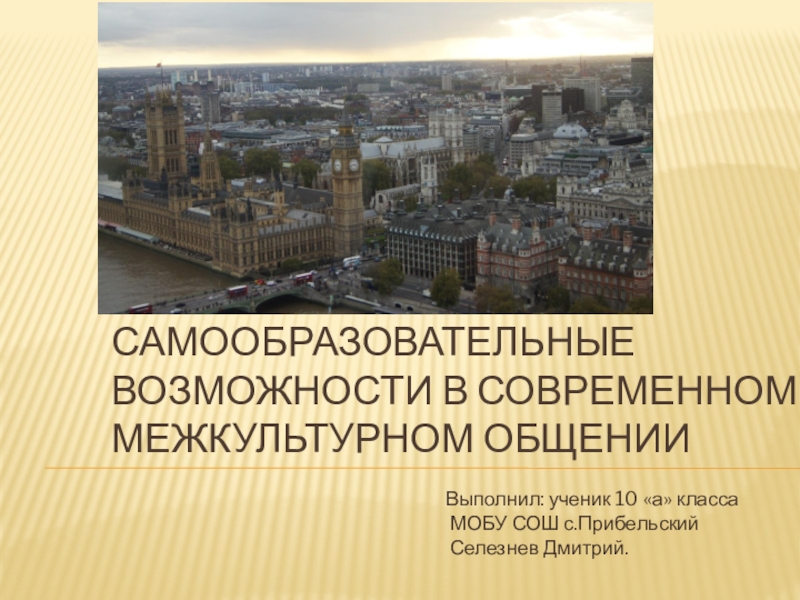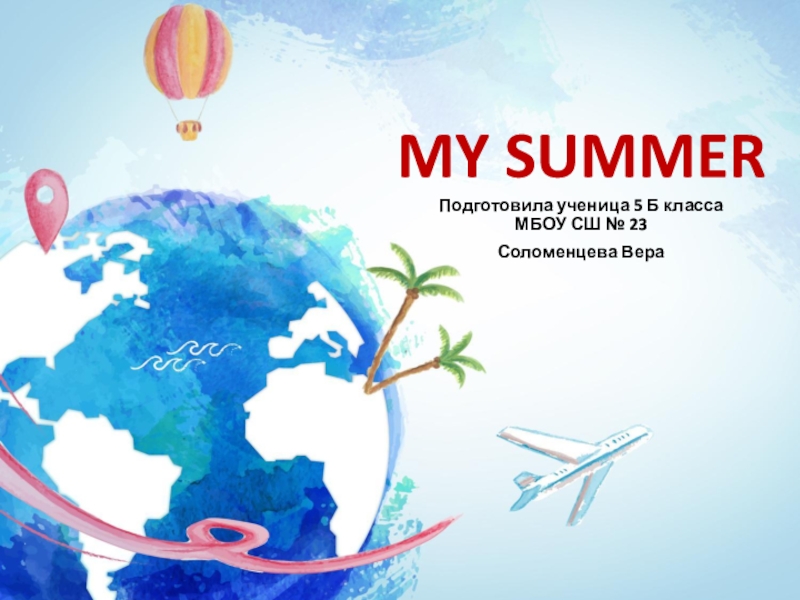- Главная
- Разное
- Образование
- Спорт
- Естествознание
- Природоведение
- Религиоведение
- Французский язык
- Черчение
- Английский язык
- Астрономия
- Алгебра
- Биология
- География
- Геометрия
- Детские презентации
- Информатика
- История
- Литература
- Математика
- Музыка
- МХК
- Немецкий язык
- ОБЖ
- Обществознание
- Окружающий мир
- Педагогика
- Русский язык
- Технология
- Физика
- Философия
- Химия
- Шаблоны, фоны, картинки для презентаций
- Экология
- Экономика
Презентация, доклад на тему Traditional costumes in Russia
Содержание
- 1. Traditional costumes in Russia
- 2. From the start Historians suppose that traditional
- 3. Popular clothesAfter Peter’s decrees (18th century) Russian
- 4. Women’s costume The Russian women’s costume was
- 5. Kokoshnik One of the most common type
- 6. Men’s costume Men’s costume was composed of
- 7. In winter In winter, Russians wore the
From the start Historians suppose that traditional Russian costume started taking its shape in the 12th-13th centuries. Up to the 18th century it fitted well all layers of Russian society: it was worn by tsars, boyars,
Слайд 2From the start
Historians suppose that traditional Russian costume started taking
its shape in the 12th-13th centuries. Up to the 18th century it fitted well all layers of Russian society: it was worn by tsars, boyars, merchants, craftsmen, and peasants.
Слайд 3Popular clothes
After Peter’s decrees (18th century) Russian nobility and the city
costumes have undergone Europeanization. However, the national (folk) Russian costume was popular in the villages till the beginning of 20th century.
Слайд 4Women’s costume
The Russian women’s costume was based on the “rubakha”
( a linen shirt or blouse). It was made flaxen embroidery, silk lace, golden threads and spangles. Collars and sleeves were decorated extensively.
By the early 20th century the most widespread women costumes were of two types: the South Russian one with poneva, i.e. a homespun woollen skirt, and the Mid-Russian one with a sarafan, i.e. a kind of sleeveless dress. The typical color of the sarafan and skirts was red, as this color literally translates to “beautiful”.
By the early 20th century the most widespread women costumes were of two types: the South Russian one with poneva, i.e. a homespun woollen skirt, and the Mid-Russian one with a sarafan, i.e. a kind of sleeveless dress. The typical color of the sarafan and skirts was red, as this color literally translates to “beautiful”.
Слайд 5Kokoshnik
One of the most common type of festive head-dress
was the "kokoshnik", it was masterfully decorated with river pearls, meshwork of pearls, golden and silver needlework, coloured foil and decorative stones. The head-dress was treasured in the family and handed down, and was an integral element of a well-off bride’s dowry.
Слайд 6Men’s costume
Men’s costume was composed of a long shirt (rubakha-
kosovorotk - a shirt with a stand-up collar fastening on the side), trousers (porty), a belt (poyas- kushak), and bast shoes (later boots). The woven shoes commonly made from fibres of the birch tree. No longer worn in modern times, today they are a decorative piece hanging in people’s homes. The cap (kartuz) came into being in the late 19th century, and it was decorated with a flower.
Слайд 7In winter
In winter, Russians wore the fur coat (shuba) and
wool felt footwear (valenki). It was extremely practical and effective in a cold northern climate. Shubas were made of fur turned inside or ‘wrong-side out’. The traditional male warm hat with flaps – ushanka (derived from the word ushi – ears) or treukh - was used to protect the ears from cold. Woman worn the traditional Russian knitting shawls and beautiful 100% wool Pavlov Posad scarves.
